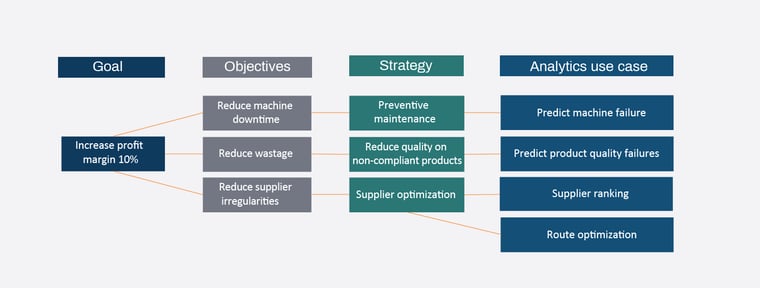Only half of the companies starting an AI pilot project are actually executing it. The key is to choose an idea that will benefit your business. Read more about how!
In 2022, 27% of chief information officers confirmed they deployed artificial intelligence (AI), according to a Gartner AI survey. Even though businesses across all industries are turning to AI and machine learning, prepare your organisation before jumping on the AI bandwagon by considering a few factors.
Ask yourself:
- Is AI necessary for achieving the project requirements or is there another way?
- Does your team have the skills to support AI and machine learning?
- How will AI impact your current operations if you adopt it?
- How will you integrate AI with existing systems?
- What are the data, security and infrastructure requirements of AI and machine learning?
The Gartner AI survey found only 54% of projects made it from the pilot phase to production. After significant investment in AI, why aren’t companies deploying it?
We found the problem begins when companies define a use case. Too often, companies are not identifying AI use cases that benefit their businesses and end-users will adopt. The question is then, how should companies unlock the value and new opportunities AI promises?
It starts with a systematic approach for each stage of the AI life cycle. We developed the Columbus AI Innovation Lab, a comprehensive method to address and account for all challenges when adding AI to your business operations and bring stakeholders into the process at the right time to help you operationalise AI.
The Columbus AI Innovation Lab: Make artificial intelligence work for your business
.png?width=760&height=349&name=MicrosoftTeams-image%20(35).png)
As we support our clients through their digital journey, we notice a common theme regarding AI adoption. Even though many are interested and invested in AI solutions, many struggle with AI adoption. As a result, we created the Columbus AI Innovation Lab to help our customers make AI work for their businesses. Our blog series on AI will explain what you need to know at each step. In the first blog of this series, we will discuss the Define phase.
Define: How to find an AI solution that is right for your business
Successful AI implementation begins with choosing an idea that will benefit your business. Every business has needs and challenges, so an AI implementation that works for another company is not guaranteed to work for yours. So, while a data science professional can brainstorm different ways other businesses use AI, if it is not done systematically with your business goals and needs, chances for success are slim.
Based on our experience helping many customers define ideas for AI uses cases, there are five areas where organisations should focus their efforts to generate ideas for AI implementations.
1. Business goals
One way to uncover and define AI use cases for your organisation is to explore your company goals and strategic initiatives. For example, a manufacturer might aim to increase its profit margins by 10% next year.
It determined three objectives to help them achieve this goal: reduce machine downtime, wastage and supplier irregularities. As part of this initiative, they set preventive maintenance strategies, reducing quality non-conformance products and optimising suppliers. From that assessment, this manufacturer realised that they could use AI analytics to predict machine failure, product quality failures, optimise supplier routes and rank suppliers.
These are use cases built from the actual goals of the company.

2. Pain points
You can determine AI use cases by looking at the specific pain points your organisation experiences. Go directly to your staff to find out what obstacles they face when doing their work.
Identify pain points by:
- Conducting workshops with staff
- Soliciting employee feedback through a survey to find out what the organisation can do better
3. Market research and trends
Another great way to determine valid AI use cases for your organisation is to look at your industry’s trends. AI might be your answer if you need to accelerate your solutions to address those trends. Companies can harness the power of data to uncover patterns, anticipate changing buyer behaviour and better study market risks with AI.
4. Competitor analysis
Complete a competitor analysis when looking for ideas to incorporate AI into your business. This helps you understand what your competitors are doing better than your business with various markers, including revenue, profit and more. From that analysis, you can determine if there are opportunities to improve and if AI can benefit you in that goal.

5. Exploring existing data
The data your organisation gathers and generates offers insight into where AI could be useful. Many times, historical data can reveal many unrealised facts. When data scientists build connected dashboards across business functions, they can identify gaps when they move from one functional area to another. Then, the data experts work with business leaders to evaluate patterns in the data and do a gap analysis.
For example, we recently worked with one of our manufacturing customers to explore its data. When we did that, the data showed glass breakage happened primarily in the first and last weeks of every month. With the gap identified, we defined analytics use cases.
These five areas will give your organisation inspiration and ideas for implementing AI. Smaller organisations might only be able to invest in one use case, so they should focus their evaluation on how AI could help them achieve their business goals. Larger organisations supporting the implementation of many uses might explore each of the five areas to build out relevant use cases for their businesses.
In the next blog in our AI series, we’ll review the Discover phase and how companies should evaluate each AI use case.


